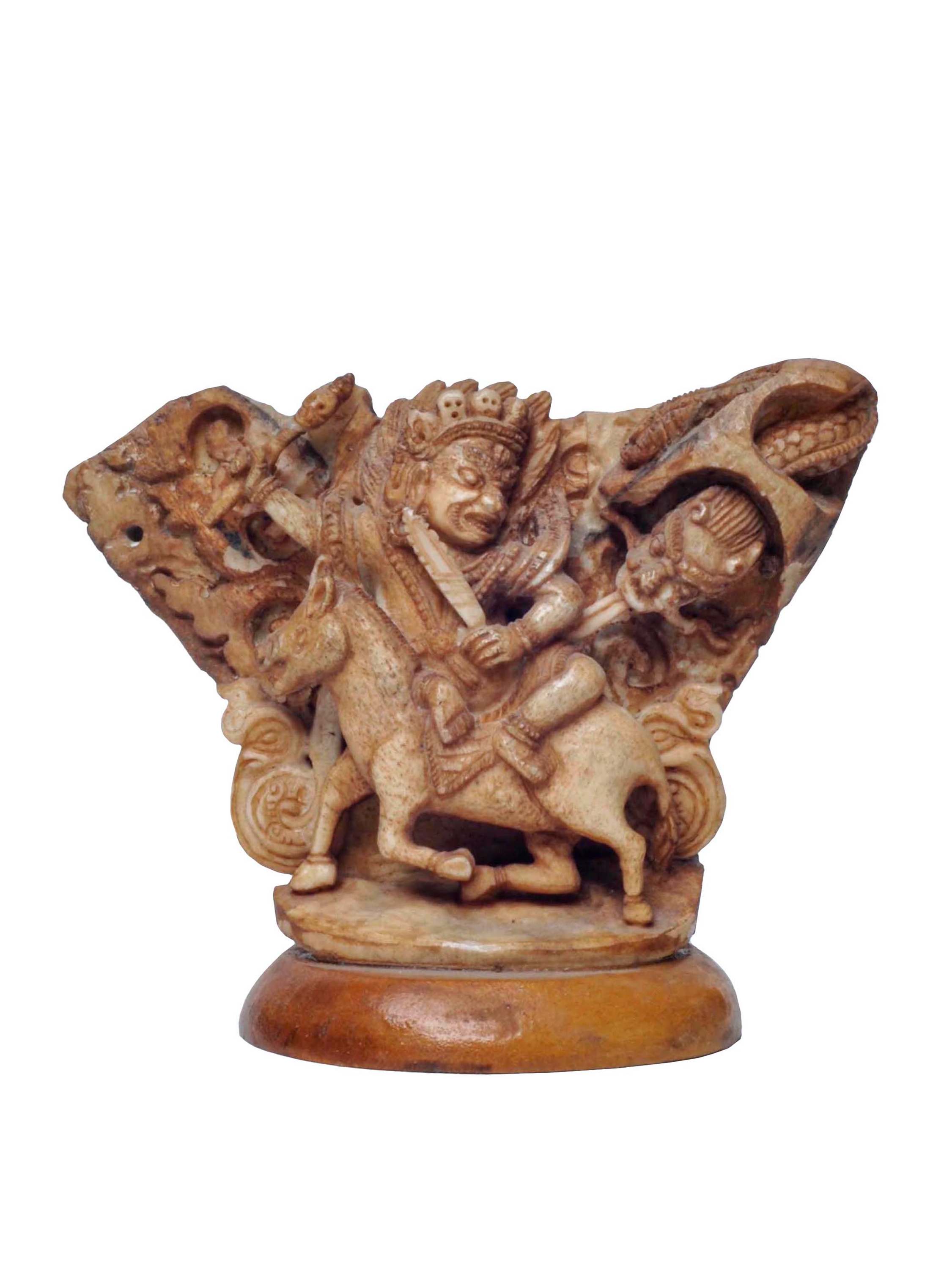Palden Lhamo amo, Shri Devi (Sanskrit), is a protecting Dharmapala of the teachings of Gautama Buddha in the Gelug school of Tibetan Buddhism. She is also called Remati. She is the wrathful deity considered to be the principal Protectress of Tibet.
Palden Lhamo is the consort of Mahakala and has been described as "the tutelary deity of Tibet and its government", and as "celebrated all over Tibet and Mongolia, and the potent protector of the Dalai and Panchen Lamas and Lhasa."
she is said to reside in a lake within Tibet, called Lhamo Latso. The lake is charged with spiritual energy and is said to bestow future visions. One of the methods to search for a new incarnation of the Dalai Lama, the search party will meditate and propitiate Palden Lhamo by this lake.
Iconography
She is usually depicted in nakthang [black-ground style scroll] crossing the sea of blood riding side-saddle on a white mule. There is an eye on the left rump of the mule which is the place where her irate husband's arrow found a mark. She had killed her son and used his flayed skin as a saddle blanket.
Unlike the support of the other 7 dharmapalas, she is atop, or surrounded by, the Himalayas. This not only indicates her association with that region but also her origin as Mahakali, daughter of Himalaya, the Indian deity. She also wears the garland of freshly severed heads characteristic of Kali.
The important distinction is that in this instance the sea of boiling blood, the corpses, and entrails are not associated with offerings intended to appease her. Lhamo's ultimate nature is as a support and a protector of the way of compassion. The personal protector of the Dalai and Panchen Lamas, Palden Lhamo is especially venerated by the Gelug denomination.
Her mule which she rides side-saddle is led through the flames by Makaravaktra, the makara-headed dakini, with lion-head dakini Simhavaktra following behind.
The sun shines from her navel and her hair is adorned with a crescent moon - peacock feather jewel. Sometimes she is shaded by a peacock feather fan or parasol. Her steed is bridled and trimmed with vipers (like that of Freya, the Norse deity) from which hang a bag of diseases, a ball of magical thread and her dice. One form of mo, the Tibetan system of divination by dice, is associated with her.
Palden Lhamo, Victorious Goddess-Defender of the Mahayana, was armed by the gods themselves. Hevajra is the one who gave her the dice to determine men's lives. Her peacock feather fan is the gift of Brahma. Kubera gave her a lion which protects and decorates her right ear. The naga king gave her a serpent for her left ear. Vajrapani gave her a hammer to use as a weapon. Her mule is the gift of the other gods.
Life Story
Lhamo (Skt. Kaladevi,) also called Remati, was married to Shinje, the king of the dudpos, who at the time of their marriage was the king of Lanka. She had vowed either to gentle him and make him favourable towards the religion of Buddha, or else to see to it that an end be put to that whole dynasty.
Hard as she tried over many years, she could not effect any improvement in his evil ways and so she determined to kill their son who was being raised to be the one to finally do away with Buddhism in that kingdom.
During the king's absence, Devi accomplished the dreadful dead. She killed her son and flayed him, then drank his blood using his skull for a cup and also ate his flesh. She then left the palace and using her son's skin as a saddle cloth, set off for her northern home on one of the king's finest steeds.
On his return, seeing what had happened, the king seized his bow and with a fierce and terrible curse shot off a poisoned arrow, but the arrow only pierced the animal's rump and there it stuck fast. The queen easily neutralized the king's imprecation, and removing the deadly barb she said: "May the wound of my mount become an eye large enough to watch over the twenty-four regions, and may I myself be the one to extirpate the lineage of the malignant kings of Lanka!" Then Palden Lhamo continued northwards, easily traversing India, Tíbet, Mongolia, and part of China, and finally settled, say some people, on the mountain Oikhan, in the Olgon district of Eastern Siberia. This mountain is said to be surrounded by large, uninhabited deserts, and by the ocean Muliding.
